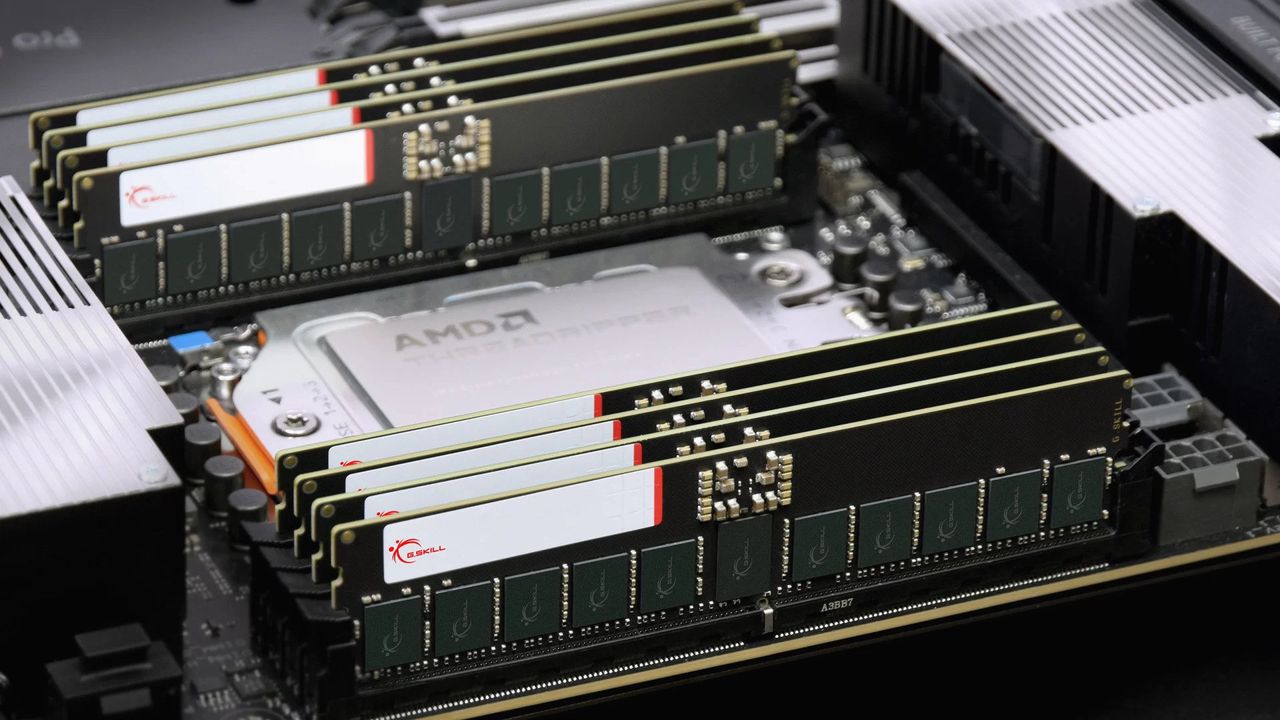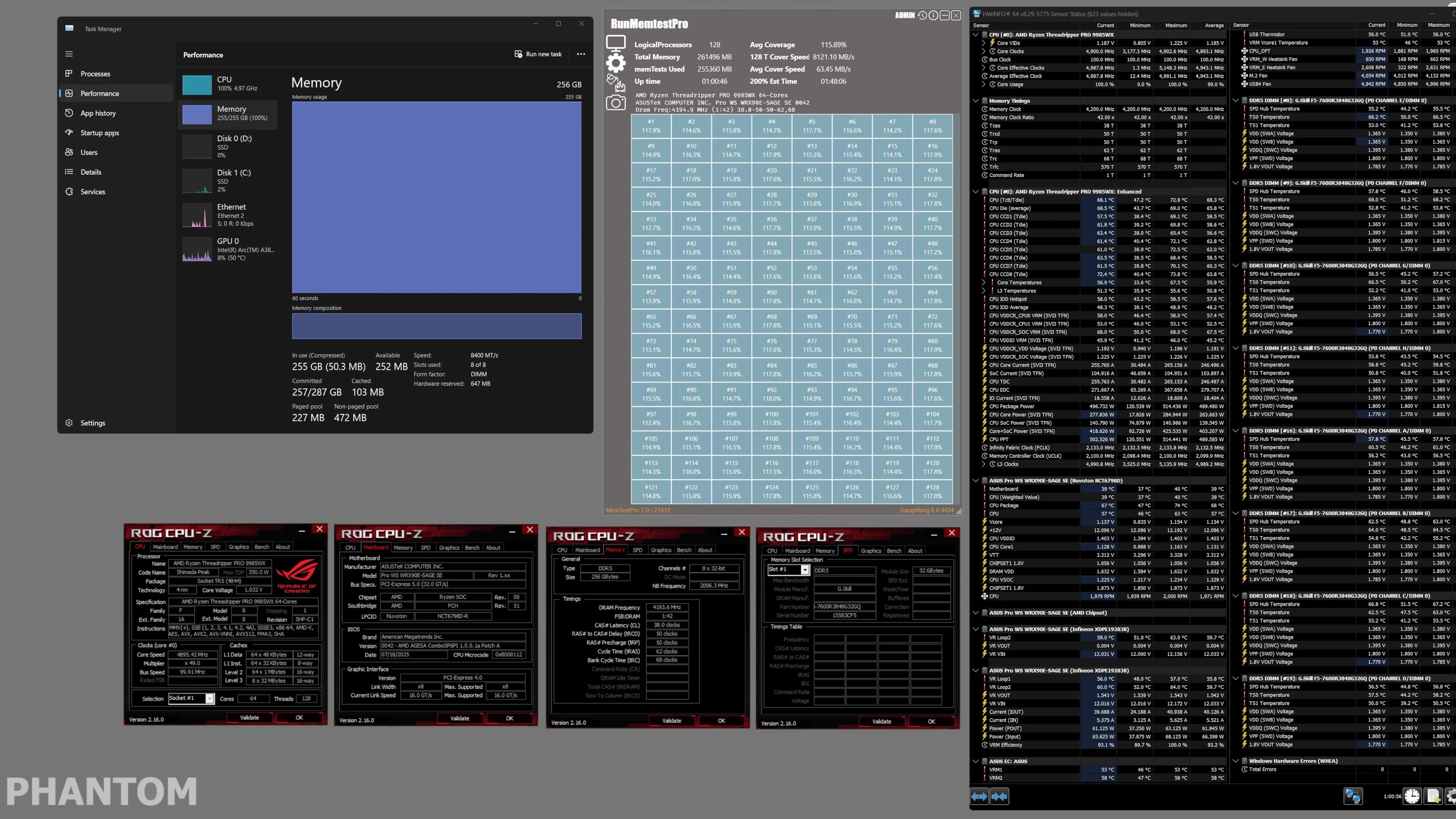
Sometimes it's hard to get enthusiastic about a new performance record with PC hardware. That's because most GHz records involved absurd setups that are ultra-niche. But one top-notch overclocker has managed to get a genuine workstation-like PC rig to hit RAM speeds that it has absolutely no right to do so.
The overclocker in question goes by the handle of 'Phantom' and has all the credentials and experience needed for pushing RAM sticks to ludicrous speed levels. Working with G.Skill for his latest venture, he managed to get some DDR5 memory to reach an incredible 8,400 MT/s.
Now, before you start furiously typing in the comments about how stupid I am because you can go out and buy RAM that runs just as fast as this, let me just explain the rest of the circumstances. The first thing to note is that the processor used was a Threadripper Pro 9985WX—a 64-core, 128-thread AMD workstation CPU—and the second, and most important, aspect to be aware of is that all eight of its memory channels were loaded up with RAM. Most records will just load up one channel.
Specifically, it's eight sticks of 32 GB G.Skill DDR5 memory, for a total of 256 GB. Oh, and they were RDIMMs, not the usual UDIMMs that almost all RAM speed records are based on. The difference between the two is that RDIMMs have an extra register (the R in RDIMM) that acts as a buffer, helping to keep all the signals stable. RDIMMs are the norm for workstations and servers, but what they're not expected to do is run at a super-high transfer rate.
That's the preserve of UDIMMs, where outright performance is more important than stability. All of which makes the fact that Phantom achieved a transfer rate of 8,400 MT/s a genuine achievement, as that much RAM and of that particular format has no right to be running so fast. But wait, it gets even more impressive.

High clock speeds can be achieved with memory by increasing the latency timings, so you might expect that this achievement required very high latencies to hit 8,400 because of the amount of RAM involved. G.Skill's announcement includes a screenshot from the test PC with the usual gamut of software tools showing the various attributes of the CPU, motherboard, and RAM.
If you look closely at the CPU-z tool, you'll see a timing profile of 38-50-50-62 (CAS, RAS-to-CAS, RAS Precharge, Cycle Time). That's incredibly low for such a memory configuration. To give you an idea of how low that is, I have a 48 GB (2 x 24) Corsair Dominator DDR5-8000 kit in my main Arrow Lake PC, and it runs at 38-48-48-98.
Of course, getting my kit to run like that is simply a case of activating the relevant XMP profile in the motherboard BIOS; Phantom would have spent hours tweaking and testing all the different RAM settings possible to get that speed and latency configuration.
I'm usually completely ambivalent about memory speed records, because they're just too niche to be of any significance, but this one has some genuine weight to it. I dare say the system might not be super-stable when under a massive workload, but it probably wouldn't require much of a reduction in the speed to make it all-day usable. If I had a hat, I'd be doffing it at Phantom right now.







